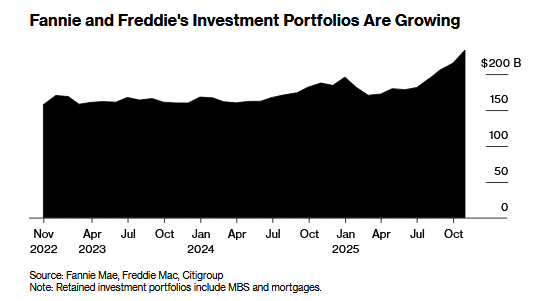 Key considerations and price for selected currencies distilled into four bullet points.
Key considerations and price for selected currencies distilled into four bullet points.
US Dollar
- The dollar’s recovery ahead of the weekend was aided by the stabilization of the stock market, where the S&P 500 managed to close back above the psychologically important 200-day moving average.
- Interpolating from prices, the market does not expect the President’s criticism to alter the Fed’s course.
- US data highlights this week include retail sales, industrial output, TIC (capital flows), housing starts, existing home sales, and minutes from last month’s FOMC meeting. The earnings season is just beginning.
- Bullish flattening of the 2-10 year curve took place while the equity market eclipsed other drivers. In calmer markets, bearish steepening may be dollar-positive through the widening of differentials and reducing the cost of a one hedging strategy.
Euro
- Italy’s fiscal challenge to the EC is the most significant immediate challenge. Pressure on Italian assets leads to flows into Germany, depressing yields and widening the interest rate discount to the US. It also boosts the existential risk of EMU in the eyes of many.
- Moody’s upgraded Portugal’s credit rating ahead of the weekend (to Baa3) citing the stronger than expected growth and fiscal consolidation. It is a catch-up move as S&P was already there, and Fitch sees it as a BBB credit. The Socialist government anticipates eliminating the budget deficit by 2020.
- It is a light economic week for the EMU. August trade data at the beginning of the week and the current account data at the end of the week will be scrutinized for signs of tariff distortions. The CPI report will most likely confirm the flash September reading (2.1% headline, 0.9% core). German ZEW may be more interesting after an unexpected decline in August industrial output. The improvement in both the current assessment and expectation components over the past two months likely came to an end in September. The DAX had fallen in both August and September by a combined ~4.5%. It was off another 1% in the first week of October before last week’s (almost) 5% slide.
- The euro appears capped around $1.1650, and support is seen ahead of last week’s low (~$1.1430).
Yen
- The dollar fell about 2 1/2% against the yen after making a new high for the year near JPY114.55 on October 3 before finding support near JPY111.60. A move above JPY112.80 now would likely confirm a low is in place.
- Japan reports August industrial output and September trade and inflation figures. Weaker exports are expected to keep Japan’s trade balance in deficit for the third month. While headline CPI is forecast to be steady at 1.3%, the core rate, which excludes fresh food may have ticked up to 1%, matching the cyclical high.
- The 1% yield level on the 30-year JGB is seen as an important mile marker for some Japanese investors. Such a yield could spur portfolio reallocation, according to press reports.
- Japanese investors bought the most amount of foreign stocks in the week ending October 5, which is the first week of the second half of the fiscal year. While traditionally, Japanese investors prefer high currency hedge ratios on bonds, equity investments are often unhedged.
Sterling
- The prospects for Brexit hang in the balance. The UK and EU were unable to make progress over the weekend, and the risks of no deal weighed on sterling. However, many small deadlines are self-imposed, perhaps on the idea that these mini-crises can facilitate a solution. The Irish border and backstop(s) remain at the center of the disagreement.
- There is a full slate of UK economic data, which includes employment, earnings, retail sales, and inflation. The general picture is one of stability in the labor market, softer retail sales, which, owing to the base effect, may see the year-over-year rate firm, and no acceleration in price pressures.
- The market sees little chance of a rate hike this year. While there is some risk of a hike in Q1 19, most think it would not happen until after Brexit.
- Trendline support (from the August, September and October lows) is found near $1.2980 at the end of the week ahead.
Canadian Dollar
- Of the major currencies, the Canadian dollar is the most sensitive to the S&P 500 over the past 60 days. The correlation on a purely directional basis of the US dollar-Canadian dollar exchange rate and the S&P 500 is -0.52, while the dollar-yen rate, its closest rival, has a correlation of +0.44.
- The market remains highly confident of 25 bp rate hike by the Bank of Canada at its October 24 meeting. It would be the third hike this year and the fifth in the cycle that began last year. The increase will lift the overnight rate to 1.75%. The next hike is not expected until Q1 19.
- Data highlights include retail sales and CPI. First auto sales likely lifted August retail sales, but not be enough to change the impression of a pullback by Canadian consumers. The average monthly gain this year has been 0.4%. In the comparable 2017 period, the average grain was 0.7%. September CPI may have softened a touch, though core measures are expected to be flat.
- Canada will impose a 25% tariff on some steel imports starting later this month. While protecting it from steel deflect away from the US, it also sends a signal that it will not be used as a backdoor into the US. That said, the US tariff on national security ground is not expected to be lifted soon.
Australian Dollar
- The Australian dollar is the worst performing major currency this year and has declined almost 9% against the US dollar.
- The Reserve Bank of Australia is firmly on hold and leaving Australian interest rates below the US, while traditionally it offered a premium.
- The minutes from the central bank’s meeting earlier this month and the September employment data are among the highlights. The main economic challenge for Australia is not in the labor market but the property and housing market.
- Of the major currencies, the Australian dollar is the most related to the Chinese yuan over the past 60 days. The inverse correlation stands near -0.69. The correlation with the Canadian dollar and the yuan, for example, is about half as much (~-0.36).
Mexican Peso
- The US dollar has gained about 0.75% during the back-to-back weekly gains it recorded against the peso. With a few exceptions, the dollar has been trading in a MXN18.50-MXN19.50 trading-range since the end of July.
- The central bank is expected to raise rates next month. It would be the third hike of the year and lift the overnight rate to 8.0%. The tightening cycle began in late 2015 with the overnight rate at 3%.
- There is a light economic calendar.
- Mexican stocks were among the best performers last week. The S&P/Bolsa fell 1.3% last week.
Emerging Markets
- The Turkish lira was the strongest currency last week, gaining 4.4% against the US dollar, and is extending its gains today. The release of American pastor Brunson, following a recent meeting between Ankara and Berlin, may begin the rapprochement with the NATO member. The dollar finished last week near TRY5.87 and has tested TRY5.75 today. The next important area is near TRY5.43 (100-day average and the halfway point of the sharp dollar rally this year).
- India reported softer than expected price pressures and stronger than forecast industrial output before the weekend and broke the downside momentum on the rupee. A smaller than expected trade deficit was reported for September. The $14 bln deficit was the smallest since April.
- Reports that the US will not formally charge China with manipulating its currency, signs that Trump and Xi will talk at the end of next month on the sidelines of the G20 meeting and the stabilization of US equities suggest that Chinese market can begin recovering from the recent slide as well.
- After the initial markup in response to the electoral results, the Brazilian real consolidated rest of the week. The focus is squarely on the politics. The dollar’s low on the eve of the election was a little below BRL3.84 and last week’s high was BRL3.79. That gap may attract prices. The US dollar had already fallen around 12% from the mid-September high amid through the initial post-election response. On the dollar’s downside, the BRL3.69 area marked the bottom in July and August.
Tags: #GBP,$AUD,$CAD,$CNY,$EUR,$JPY,brl,MXN,newsletter,SPX




























